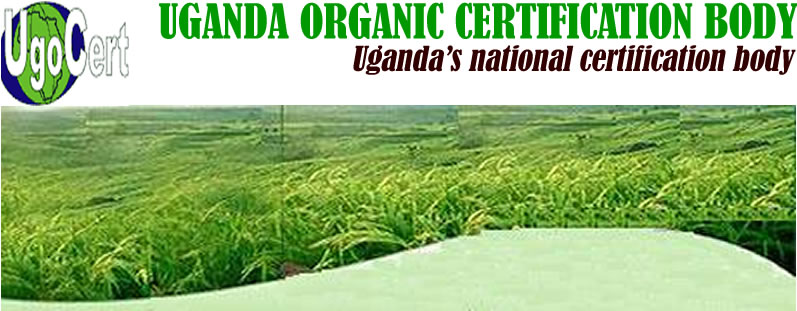Introduction: The Importance of Soil Health and Its Impact on Plant Growth
Ensuring soil health is crucial for optimal plant growth and garden productivity. The quality of soil directly impacts the nutrients available to plants, their ability to absorb water, and overall resilience against pests and diseases. By prioritizing soil health, gardeners can create thriving ecosystems where plants flourish naturally. From organic matter enrichment to proper pH balance, various measures can be taken to enhance soil quality and create a fertile environment for robust plant growth. With increased productivity comes not only bountiful harvests but also the satisfaction of cultivating a sustainable and vibrant garden ecosystem.
Understanding the Signs of Unhealthy Soil and Common Issues
Maintaining healthy soil is essential for successful gardening and farming. However, determining the health of your soil can be a challenging task. That’s where understanding the signs of unhealthy soil, common soil issues, nutrient deficiencies, and pH imbalance comes into play. By learning about these indicators, you can take proactive steps to improve your soil’s condition and maximize crop yields.
Unhealthy soil often exhibits visible signs that indicate underlying issues. One of the most noticeable signs is poor plant growth or stunted development. Plants may appear weak, with yellowing or discolored leaves. Additionally, if you notice an abundance of weeds in your garden or farm, this could suggest low-quality soil.
Nutrient deficiencies are another challenge faced by gardeners and farmers alike. When essential nutrients such as nitrogen (N), phosphorus (P), or potassium (K) are lacking in the soil, plants cannot thrive properly. Signs of nutrient deficiencies vary depending on which nutrient is missing but may include yellowing leaves, stunted growth, or poor flower production.
Fortunately, there are various methods available to check your soil’s health accurately and efficiently. Soil testing kits are readily available for home gardeners while professional laboratories offer comprehensive soil analysis services that provide detailed insights into your soil’s composition. These tests can identify nutrient deficiencies, pH imbalances, and other soil issues, enabling you to make informed decisions about necessary amendments.
By understanding the signs of unhealthy soil, common soil issues, nutrient deficiencies, and pH imbalance, you are equipped with the knowledge to address these problems effectively. Regular monitoring and appropriate corrective measures will ensure that your soil remains healthy and fertile, ultimately leading to bountiful harvests and thriving plants.
The Importance of Conducting a Soil Test to Assess Nutrient Levels and Organic Matter Content
Soil testing is an essential tool for ensuring optimal plant growth and maximizing agricultural productivity. By analyzing nutrient levels, assessing organic matter content, and employing advanced testing methods, farmers and gardeners can make informed decisions about soil management practices.
One of the key aspects of soil testing is nutrient analysis. Understanding the nutrient composition of the soil allows for precise fertilization strategies tailored to the specific needs of different crops or plants. Traditional methods such as chemical analysis have been used for years, but newer techniques like spectroscopy and molecular biology are emerging as powerful tools in this field.
To accurately assess these parameters, various soil testing methods are employed. Physical tests involve examining soil texture, structure, and moisture retention capabilities. Chemical tests analyze pH levels, nutrient availability, and salinity levels. Biological tests focus on microbial activity and diversity within the soil ecosystem.
By embracing these cutting-edge techniques in soil testing and nutrient analysis, farmers can optimize their fertilizer inputs while minimizing environmental impact. This not only ensures healthy crop growth but also contributes to sustainable farming practices by reducing excessive fertilizer usage.
In conclusion, adopting sophisticated soil testing methods enables us to monitor nutrient levels accurately while assessing organic matter content in soils effectively. These valuable insights empower farmers with the knowledge needed to make informed decisions about fertilization strategies and overall land management practices. As we continue to explore innovative approaches within this field, we can unlock a world of possibilities towards achieving enhanced agricultural productivity and environmental sustainability.
Tips for Improving Soil Health and Preventing Future Problems
In today’s world, the importance of sustainable and eco-friendly farming practices cannot be emphasized enough. Soil enrichment techniques such as the use of organic fertilizers, cover cropping, crop rotation, and composting play a vital role in ensuring the long-term health and productivity of our agricultural lands.
Cover cropping is another effective technique that involves planting specific crops during periods when the main cash crops are not grown. These cover crops help prevent soil erosion by protecting the land from wind and water damage. Additionally, they contribute to weed suppression and increase biodiversity by attracting beneficial insects.
Crop rotation is an age-old practice that involves systematically alternating crops in different sections of a field over time. This technique helps break disease cycles, control pests naturally, reduce soil erosion, improve nutrient availability, and optimize yield potential. By rotating crops with different nutrient requirements or growth habits, farmers can maintain a healthy balance in the soil ecosystem.
By incorporating these soil enrichment techniques into their farming practices, farmers can reduce their reliance on synthetic chemicals while promoting sustainable agriculture. Not only do these methods contribute to healthier soils but they also result in higher-quality produce with fewer environmental impacts. So let us embrace these eco-friendly practices for a greener future where our soils remain fertile for generations to come.
Conclusion: Enhance Your Gardening Success by Prioritizing Soil Health Maintenance
In conclusion, prioritizing soil health maintenance is crucial for enhancing your gardening success. By focusing on the keywords “soil health maintenance,” you can ensure that your plants receive the necessary nutrients and support to thrive.
Taking care of your soil involves various practices such as regular testing, adding organic matter, proper watering techniques, and avoiding chemical fertilizers. These actions contribute to a balanced soil ecosystem that promotes healthy root development, nutrient absorption, and disease resistance in plants.
By prioritizing soil health maintenance, you can expect improved plant growth, increased yields, vibrant blooms, and overall garden productivity. Additionally, healthy soil reduces the need for excessive pesticide use and helps conserve water by improving moisture retention.
Remember that gardening is a continuous learning process. Stay informed about the best practices for maintaining soil health by consulting reputable sources or seeking advice from experienced gardeners in your community. By implementing these strategies consistently over time, you will reap the rewards of a thriving garden that brings joy and satisfaction to both novice and seasoned gardeners alike.
- The Importance of Maintaining a Healthy and Balanced Ecosystem: How it Benefits Us and the EnvironmentIntroduction: Understanding the Significance of a Healthy and Balanced Ecosystem Imagine a world where nature thrives in perfect harmony, where every living organism plays a vital role in maintaining the delicate balance of our planet. This is the power of a healthy ecosystem. Ecosystems are not only beautiful and awe-inspiring, but they also serve as… Read more: The Importance of Maintaining a Healthy and Balanced Ecosystem: How it Benefits Us and the Environment
- The Importance of Embracing Environmentally Sustainable Practices for a Greener Futureenvironmentally sustainable practices, greener future, climate change, renewable energy, reduce carbon footprint, eco-friendly alternatives. In today’s world, the importance of embracing environmentally sustainable practices cannot be overstated. With the growing concern over climate change and its impact on our planet, it is crucial that we take proactive steps towards creating a greener future. One of… Read more: The Importance of Embracing Environmentally Sustainable Practices for a Greener Future
- Learn How to Check for Soil Health Issues and Improve Your Garden’s ProductivityIntroduction: The Importance of Soil Health and Its Impact on Plant Growth Ensuring soil health is crucial for optimal plant growth and garden productivity. The quality of soil directly impacts the nutrients available to plants, their ability to absorb water, and overall resilience against pests and diseases. By prioritizing soil health, gardeners can create thriving… Read more: Learn How to Check for Soil Health Issues and Improve Your Garden’s Productivity
- The Latest Developments Elsewhere: Exploring the Exciting Advancements in Various FieldsThe world we live in is constantly evolving and progressing at an unprecedented pace. In every corner of the globe, remarkable advancements are being made across a multitude of fields. From science and technology to medicine and beyond, the latest developments are shaping the way we live, work, and interact with the world around us.… Read more: The Latest Developments Elsewhere: Exploring the Exciting Advancements in Various Fields
- The Importance of Soil Health and Nutrient Management: Enhancing Crop Productivity and Sustainable AgricultureIntroduction: Understanding the Vital Role of Soil Health in Agriculture In today’s rapidly changing world, the importance of soil health and sustainable agriculture practices cannot be overstated. As farmers and agricultural professionals strive to maximize crop productivity while minimizing environmental impact, the management of soil nutrients and fertility plays a crucial role. One key aspect… Read more: The Importance of Soil Health and Nutrient Management: Enhancing Crop Productivity and Sustainable Agriculture
- The Importance of Organic Standards: Ensuring Trustworthy and Sustainable AgricultureOrganic standards, trustworthy agriculture, sustainable agriculture, consumer trust, environmental impact, health benefits. In today’s world where consumers are becoming increasingly conscious about the food they consume and its impact on their health and the environment, organic standards play a crucial role in ensuring trustworthy and sustainable agriculture practices. These standards not only provide a framework… Read more: The Importance of Organic Standards: Ensuring Trustworthy and Sustainable Agriculture
- Unlocking the Secrets: How to Increase the Yield of Organic Agricultural ProductsIntroduction: The Growing Demand for Organic Agricultural Products The demand for organic agricultural products has been steadily increasing in recent years. As consumers become more health-conscious and environmentally aware, they are seeking out food that is grown without the use of synthetic pesticides, fertilizers, and genetically modified organisms (GMOs). This growing demand for organic products… Read more: Unlocking the Secrets: How to Increase the Yield of Organic Agricultural Products
- Unlocking Opportunities: The Power of International Conferences in Driving Global Collaboration and InnovationIn today’s interconnected world, international conferences have emerged as powerful platforms for driving global collaboration and innovation. These gatherings bring together experts, thought leaders, and professionals from various industries and countries, creating a unique opportunity for knowledge sharing, networking, and forging partnerships. International conferences have become powerful platforms for driving global collaboration and innovation. These… Read more: Unlocking Opportunities: The Power of International Conferences in Driving Global Collaboration and Innovation
- The Top 7 Best Ways To Raise Organic Livestock In A Healthy MannerOrganic Livestock Must Be Raised With Proper Care Organic livestock must be raised in a proper manner.This is an introduction to the topic of organic livestock farming. It is divided into three sections:Organic livestock must be raised in a proper manner. This is because organic livestock will promote the health of the soil and other… Read more: The Top 7 Best Ways To Raise Organic Livestock In A Healthy Manner






